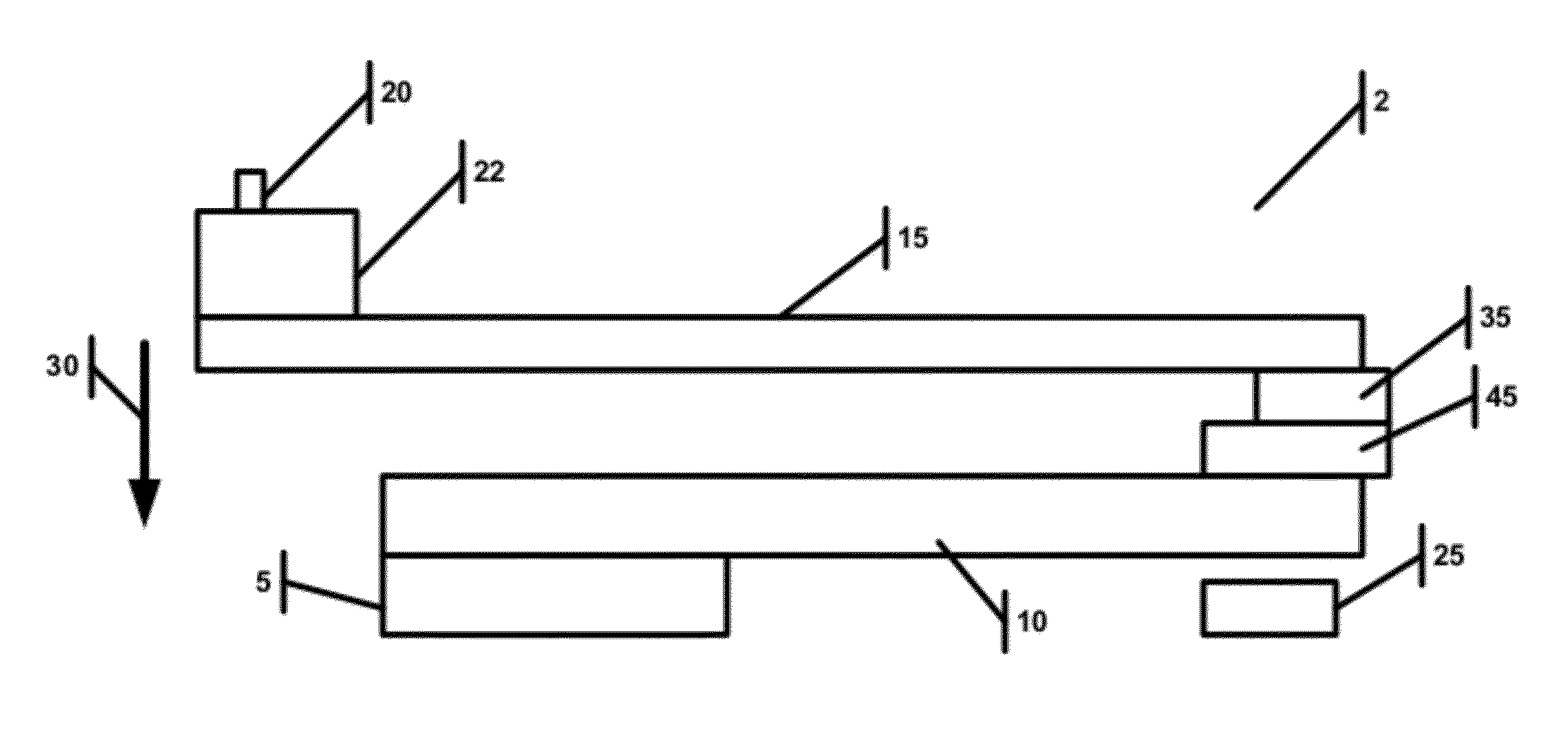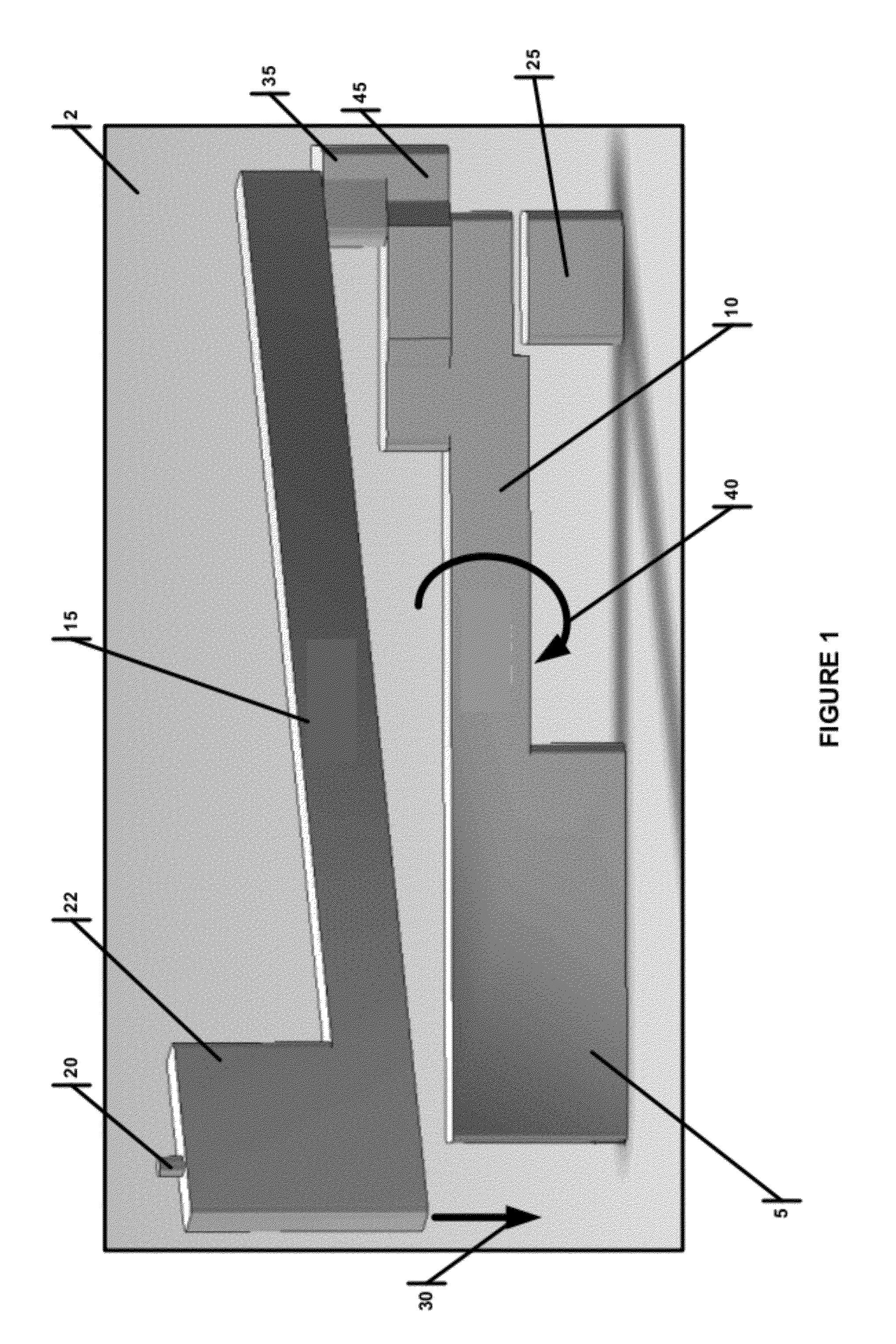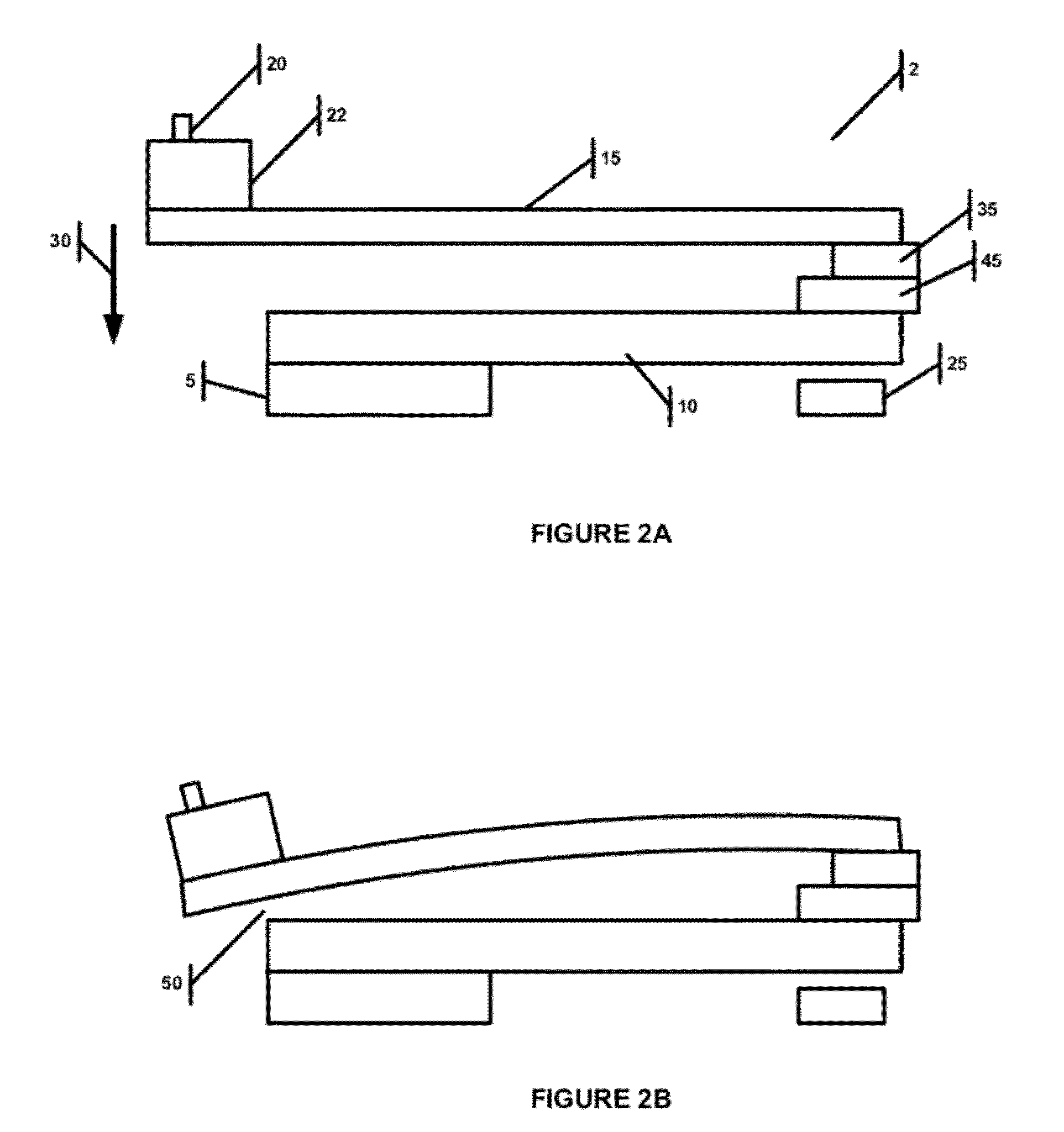Probe for testing semiconductor devices
a technology for semiconductor devices and contactors, applied in the direction of electrical testing, measurement devices, instruments, etc., can solve the problems of increasing the cost of probe cards, requiring a larger probe force, and a large tip contact area, so as to achieve the effect of increasing the packing density
- Summary
- Abstract
- Description
- Claims
- Application Information
AI Technical Summary
Benefits of technology
Problems solved by technology
Method used
Image
Examples
Embodiment Construction
[0034]What is described below is a novel hybrid torsional probe design that has a high packing density. The design comprises a torsion element and a bending element, such that it comprises a hybrid design. Also described below are novel probe designs that incorporate various union angle interface edge shapes, pivot cutouts and buffer layers to prevent failure from stress fractures. As described in U.S. Pat. No. 7,589,542 and U.S. patent Ser. No. 12 / 042,295, of which the present application is a continuation-in-part, a hybrid torsional design is described. The following disclosure details further improvements to the previously disclosed probe designs.
[0035]Now turning to the novel torsional probe, both the torsion and bending elements allow the hybrid probe to store the displacement energy through torsion and bending. The hybrid design exploits the advantages of both the torsional and cantilever probe designs (i.e., greater packing density, less probe failure from material fatigue, l...
PUM
 Login to View More
Login to View More Abstract
Description
Claims
Application Information
 Login to View More
Login to View More - R&D
- Intellectual Property
- Life Sciences
- Materials
- Tech Scout
- Unparalleled Data Quality
- Higher Quality Content
- 60% Fewer Hallucinations
Browse by: Latest US Patents, China's latest patents, Technical Efficacy Thesaurus, Application Domain, Technology Topic, Popular Technical Reports.
© 2025 PatSnap. All rights reserved.Legal|Privacy policy|Modern Slavery Act Transparency Statement|Sitemap|About US| Contact US: help@patsnap.com



